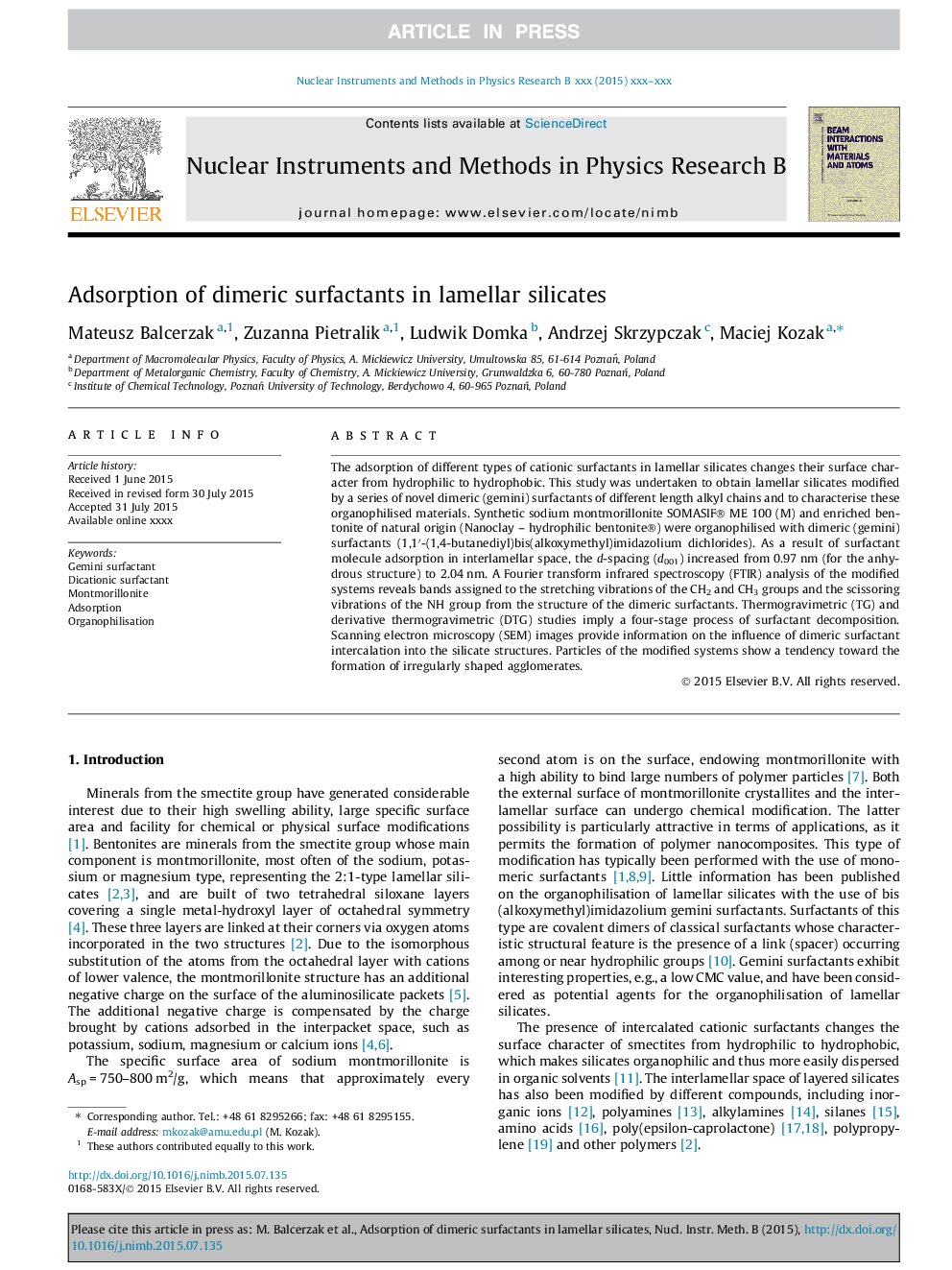| Article ID | Journal | Published Year | Pages | File Type |
|---|---|---|---|---|
| 8039997 | Nuclear Instruments and Methods in Physics Research Section B: Beam Interactions with Materials and Atoms | 2015 | 8 Pages |
Abstract
The adsorption of different types of cationic surfactants in lamellar silicates changes their surface character from hydrophilic to hydrophobic. This study was undertaken to obtain lamellar silicates modified by a series of novel dimeric (gemini) surfactants of different length alkyl chains and to characterise these organophilised materials. Synthetic sodium montmorillonite SOMASIF® ME 100 (M) and enriched bentonite of natural origin (Nanoclay - hydrophilic bentonite®) were organophilised with dimeric (gemini) surfactants (1,1â²-(1,4-butanediyl)bis(alkoxymethyl)imidazolium dichlorides). As a result of surfactant molecule adsorption in interlamellar space, the d-spacing (d001) increased from 0.97Â nm (for the anhydrous structure) to 2.04Â nm. A Fourier transform infrared spectroscopy (FTIR) analysis of the modified systems reveals bands assigned to the stretching vibrations of the CH2 and CH3 groups and the scissoring vibrations of the NH group from the structure of the dimeric surfactants. Thermogravimetric (TG) and derivative thermogravimetric (DTG) studies imply a four-stage process of surfactant decomposition. Scanning electron microscopy (SEM) images provide information on the influence of dimeric surfactant intercalation into the silicate structures. Particles of the modified systems show a tendency toward the formation of irregularly shaped agglomerates.
Related Topics
Physical Sciences and Engineering
Materials Science
Surfaces, Coatings and Films
Authors
Mateusz Balcerzak, Zuzanna Pietralik, Ludwik Domka, Andrzej Skrzypczak, Maciej Kozak,
